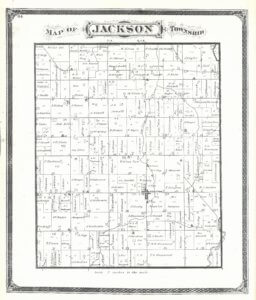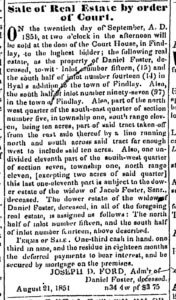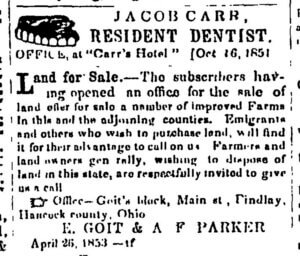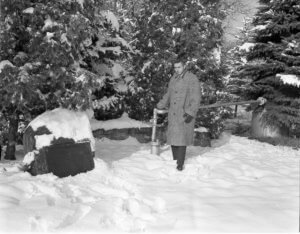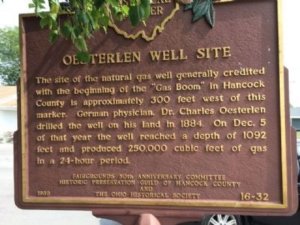Don’t miss Pat’s earlier installments discovering Findlay’s history! Part One, “Why Findlay?”, exploring early Hancock County History, is here and Part Two, “Early Findlay Residents”, sharing information about our earliest citizens, is here!
Findlay and Hancock County continued to grow as more and more settlers arrived and settled in. A man named Richard Wade, a farmer living in Jackson Township, with the help from some friends, dug a well for water. At a depth of 10 feet, the men took a break for dinner, after having reached water.
When they returned they looked in the well with a lit torch, which caused an explosion. GAS! Mr. Wade set up a system bringing the gas through a wooden box, occasionally lighting it for friends at get togethers.
In 1838, Daniel Foster, living at the corner of South Main and East Hardin Street in Findlay also had a well that contained gas. He set up a system of pipes (including a gun barrel) carrying the gas into his house. He used the gas for heat and cooking. In 1850, Mr. Foster died and his property was brought by Jacob Carr, the village dentist. He found Foster’s old gas system and decided to build his own.
- Daniel Foster discovered gas in his well at his home on the corner of South Main and East Hardin Street in 1838. After his death this property was sold to the local dentist (click to read the article!)
- Local dentist Jacob Carr purchased the property in 1850 and found Foster’s old gas system and decided to build his own. (click to read the article!)
Dr. Charles Oesterlen, a German physician arrived in Findlay in 1836. Aside from his interest in medicine, Dr. Oesterlen was also an amateur scientist and geologist.
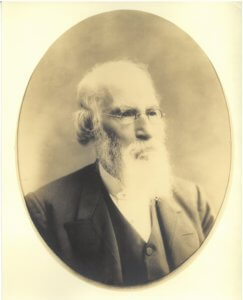
Dr. Charles Oesterlen, a German physician who relocated to Findlay in 1836 was interested in learning more about the evidence of gas in Findlay
The early evidence of gas attracted his attention. Its appearance in water wells, led him to conclude that there was a quantity of natural gas underneath Hancock County. Several years later Dr. Oesterlen discovered a patch of ground on his farm near Lye Creek where nothing would grow. He had a hole dug six feet deep.
Upon applying a match in the hole, it would burn for hours. Aside from water wells showing traces of gas, and there were many, there was other evidence to be found in gas seepage which existed within the confines of the village. One of these was located on the north bank of the Blanchard River near where the Cory Street bridge touches the bank. Some enterprising person caught some of the escaping gas in an inverted barrel and, by means of a pipe paced in the top, lighted it from time to time.
A much larger excitement was yet to come.
Stay tuned for Pat’s next blog about Findlay and Hancock County’s history, coming on October 1!



